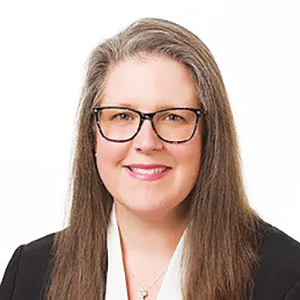Amy Hester on why we should take fall risk seriously

By HME News Staff
Updated 11:18 AM CST, Wed February 21, 2024
 BENTON, Ark. - HD Nursing has developed a fall prevention program based on a predictive analytics tool that looks at nine factors, including age, fall history, medications, mental status and mobility issues, and then assigns a score to determine a person’s fall risk.
BENTON, Ark. - HD Nursing has developed a fall prevention program based on a predictive analytics tool that looks at nine factors, including age, fall history, medications, mental status and mobility issues, and then assigns a score to determine a person’s fall risk.
“Based on that score, we know you are at risk, what the degree is of that risk, and what is driving that risk,” says Amy Hester, CEO and chairwoman of HD Nursing, a patient safety solutions company she founded in 2012 to focus on fall prevention.
HME News: How big of a problem are falls?
Amy Hester: Falls are horrible. For our elderly in the community, falls are the No. 1 cause for traumatic injury in those 65 and older, and the No. 1 cause for people losing their independence and going into either an assisted living or nursing home. All of that is expensive, but not only that, it’s the quality of life for the individual. Falls are very costly, even in the hospital – even falls that don’t result in injury can increase length of stay and often change a person’s disposition on discharge. (Instead of going home), now they are looking at some alternative solutions.
HME: Your clinical specialty is in neuroscience, and you’ve based your assessment tool on neuroscience patients. How does fall risk also apply to other populations, such as seniors?
Hester: Aging has its own set of complexities where the body is changing, and there are other factors around cognitive issues, sight, ability to hear, ability to perceive hazards in the environment. There’s a lot of things that create risk for individuals and so the very foundation of our work was to be able to accurately identify who was at risk to fall. You can have two seniors both at fall risk and one is related to the meds they are taking and with another person, it is really about their mobility and their frequency of going to the bathroom in the middle of the night. So how you mitigate fall risk in those two individuals is very different from one another.
HME: Will the push to hospital-at-home also put more of a focus on fall prevention?
Hester: The reality for hospital-at-home is you have to demonstrate how you are meeting the in-patient standards of care. That’s true for falls, for pressure injury prevention, for infection prevention – all of those. (Fall prevention) is a standard of care in the hospital setting and a standard of care in the hospital-at-home setting. If you can have a program that helps you prioritize who goes into the hospital that’s adequately manned in the community, it’s a win-win.
Comments